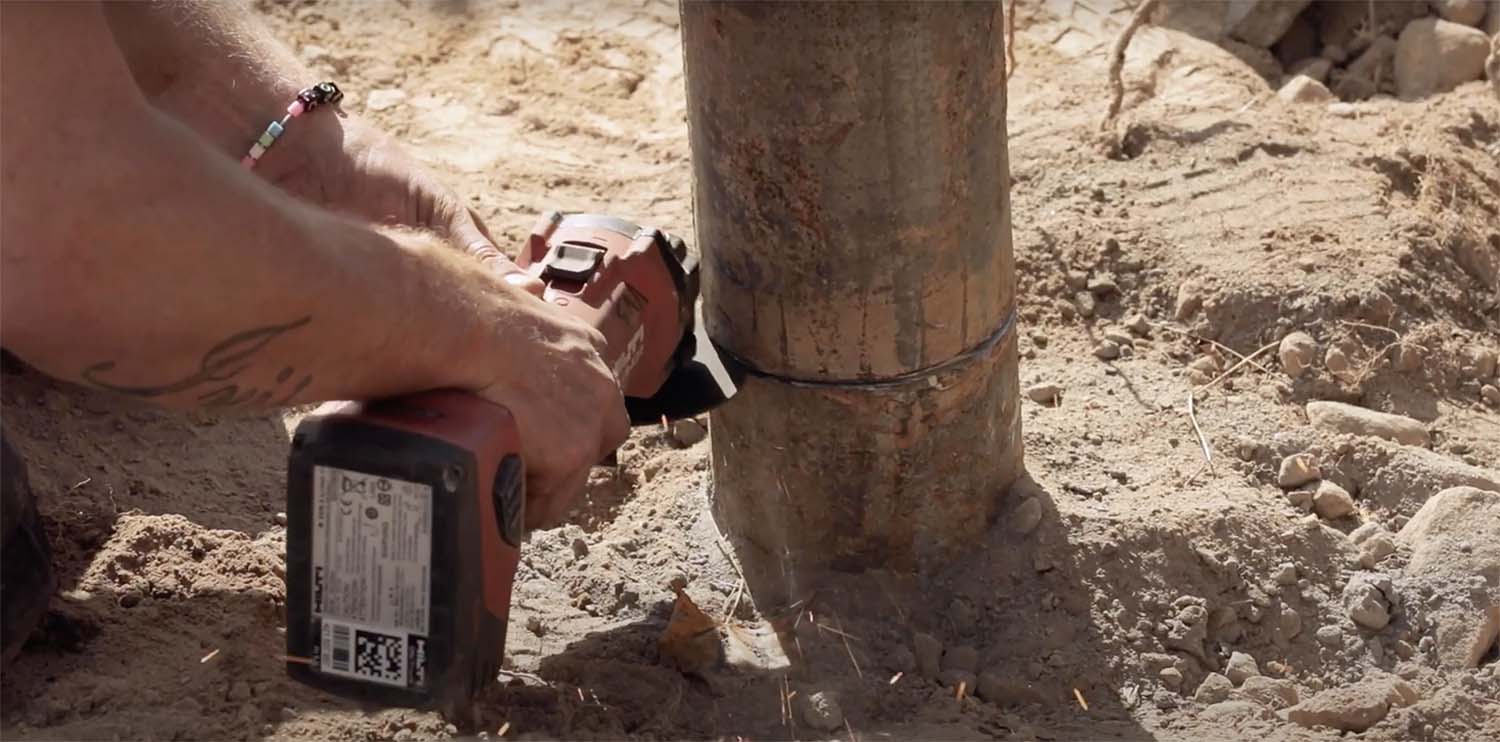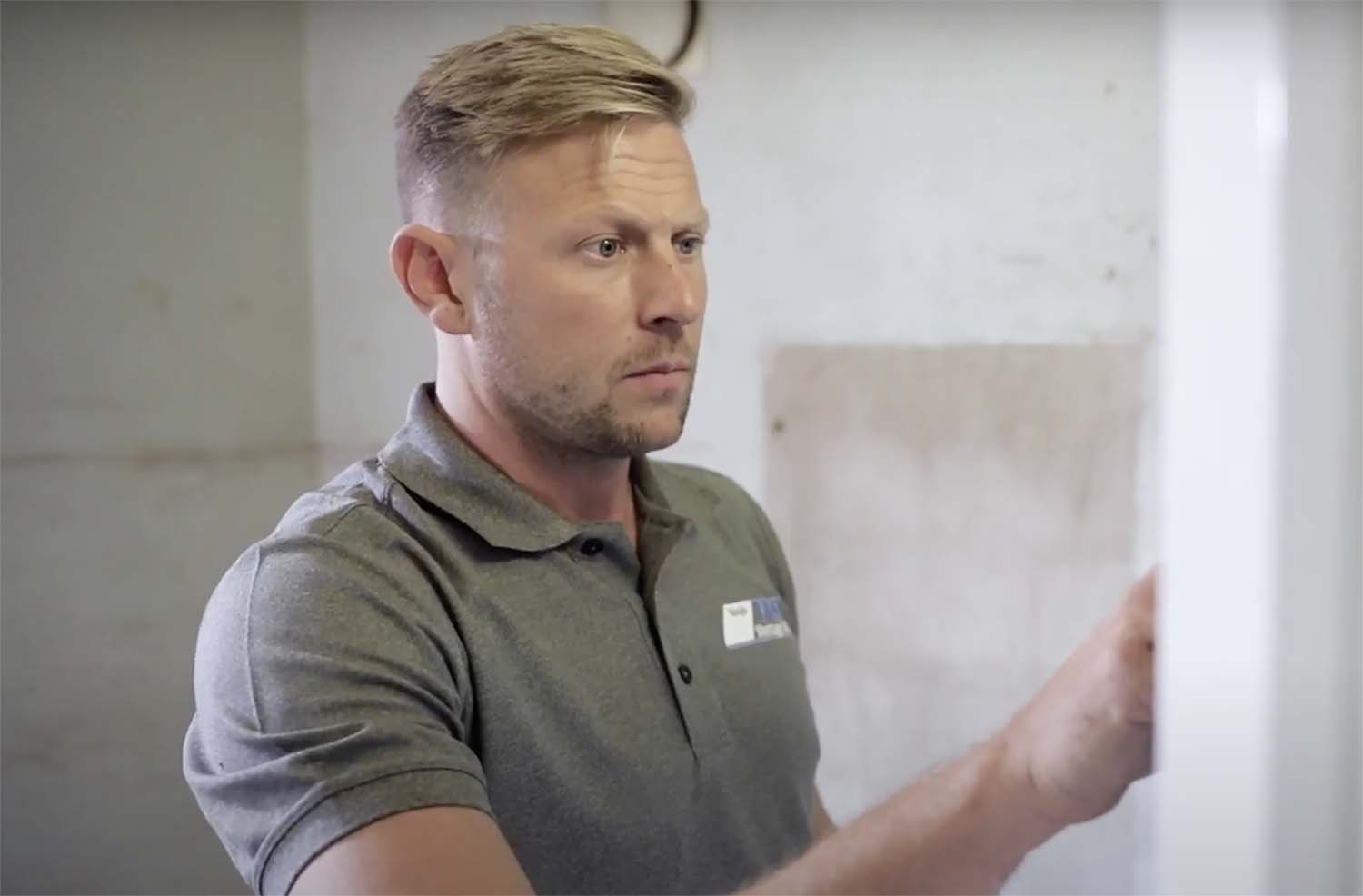How to install ground source heating
Here, we go through step by step what happens when your local CTC Partner installs a ground source heat pump — from the start of preparations through to when your heat pump begins heating your home.
Notify your municipality
Before your ground source heat pump can be installed and connected in your home, a hole needs to be drilled into the ground from where heat will be extracted. In order to perform drilling, you will first need to notify your municipality.
Note that you cannot start installing the heat pump until the municipality has granted permission. Check the website of your municipality for applicable rules and regulations, and remember that case times can vary depending on the municipality.
Tip: Boreholes must be placed at least 20 metres apart. If your neighbour has drilled for ground source heat, this may affect where your borehole can be drilled. If your drilling may have an impact on your neighbour's prospects for drilling for ground source heat in the future, your neighbour must be consulted.
Preparations in the garden
When it's time to drill, preparations will be made in your garden and the drilling rig will be set up. The drilling company will try to leave as little evidence of their work as possible and to not damage flower beds, slabs and lawns more than is necessary. It is often possible to lay out some form of ground protection before the machine enters the garden.
Drilling depth for ground source heating
Now it's time to start drilling. In order to extract sufficient energy, the hole must have an active drill depth of between 100 and 200 metres, sometimes even further. To get more heat, it may be required to drill two boreholes that can be connected together.
The farther south you are, the shallower the hole — if you entrust a local drilling company to perform the work, they should know the conditions in the area.

Installation underground
The hole is drilled downwards into the bedrock, and the so-called energy well and its connections are embedded underground. The portion of the hole above the bedrock is lined with welded metal pipes.
After drilling, hoses are brought down into the hole for the liquid (brine), which will then transport the heat from the bedrock into the house.
Borehole hoses must be embedded and connected to the outer wall through which the heat will enter. Some homeowners elect to perform this work themselves, but this must be agreed with the installer.
Restoring the garden
Now the drilling is complete and the drilling equipment is removed. Even if the drilling company was careful in your garden, you may need to inspect the lawn and restore slabs and pathways to their original conditions. Whether this is to be done by you or the drilling company can be agreed upon in advance.
Indoor work can begin
The old boiler is dismantled and the new heat pump is positioned in place. The installer can then begin the work by installing piping between the heat pump and the outer wall through which the borehole hoses enter the house.
Once installation is completed, the pipes are filled with brine, which is then pumped around the system for a few hours to remove any air.
An electrician installs the sensors needed in the installation and connects the heat pump to the house's mains.
Time to make sure everything works
It is now time for the installer to carefully verify that everything functions, and to explain to you how to use and take care of your heat pump. It is also important that you complete the warranty and insurance forms together with your installer and register your product. It usually takes a few days to a week to complete the entire ground source heating installation.
Your ground source heat pump is now ready for use!

So, how much does ground source heating cost?
It's very difficult to give a general figure, since it primarily depends on the depth of the borehole. To obtain maximum energy at the lowest price, contact one of CTC's local retailers
Updated: 2025-06-10
Published: 2022-12-08
 Ground source heat pumps
Ground source heat pumps
 Air-to-water heat pumps
Air-to-water heat pumps
 Indoor modules
Indoor modules
 Ventilation solutions
Ventilation solutions
 Control for CTC heat pumps
Control for CTC heat pumps
 Hot water heaters
Hot water heaters
 Accumulator tanks
Accumulator tanks
 Electric heating
Electric heating
 Accessories
Accessories


